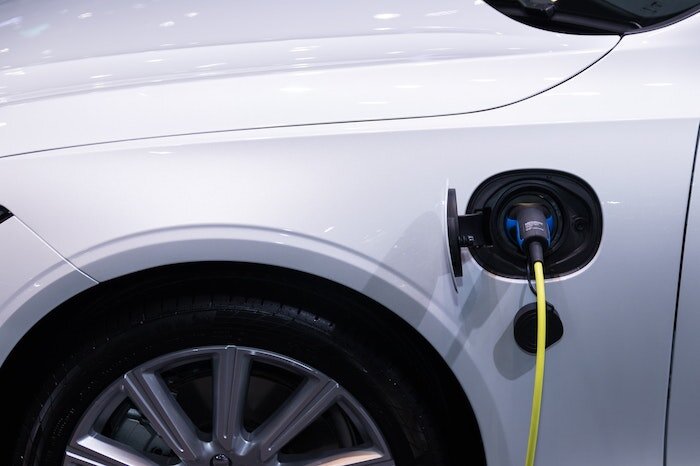博文
电动汽车可以通过点对点系统在路上充电?
||
电动汽车可以通过点对点系统在路上充电?
诸平

https://techxplore.com/news/2022-06-electric-vehicles-peer-to-peer.html
据美国堪萨斯大学(University of Kansas)2022年6月17日提供的消息,研究表明,电动汽车可以通过点对点系统在路上充电(Study shows electric vehicles could be charged on the go via peer-to-peer system)。
每天,美国人都能在路上看到更多的纯电动汽车(battery-electric vehicles简称BEVs)。根据《财富商业洞察》(Fortune Business Insights)报道,美国电动汽车市场预计将从2021年的282.4亿美元增长到2028年的1374.3亿美元。就全球电动汽车市场发展而言,2022年5月19日的《市场洞察报告》(Market Insight Reports)指出:到2027年,纯电动汽车市场规模预计将超过3000亿美元(详见Battery Electric Vehicle Market Forecast 2027)。从内燃机汽车转向纯电动汽车的原因是令人信服的:电动汽车对环境更清洁,操作成本更低,而且可以轻松地通过目前全国燃油价格为每加仑5美元的加油站。然而,一个缺点使一些消费者对购买限程BEV持谨慎态度。与那些储量丰富的加油站不同,电动汽车的充电站仍然很少,而且为电动汽车的锂离子电池充电可能需要几个小时,这使得电动汽车在一些长途公路旅行中不切实际。
现在,堪萨斯大学工程学院的一名研究人员与合作者于2022年4月4日在《科学报告》(Scientific Reports)杂志网站发表的一份研究报告,提出了一种点对点系统,通过与基于云的控制系统匹配,电动汽车可以在行驶过程中彼此共享充电。详见:Prabuddha Chakraborty, Robert Parker, Tamzidul Hoque , Jonathan Cruz, Lili Du, Shuo Wang, Swarup Bhunia. Addressing the range anxiety of battery electric vehicles with charging en route. Scientific Reports, 2022, 12, Article number: 5588. DOI: 10.1038/s41598-022-08942-2. Published: 04 April 2022. https://doi.org/10.1038/s41598-022-08942-2
堪萨斯大学电气工程计算机科学助理教授塔姆兹杜尔·霍克(Tamzidul Hoque)说:“当多辆电动汽车行驶在路上时,它们实际上可以在行驶中互相分享电量,而不需要停下来。一辆车可能有充足的电量,它可能不需要走太远,它可以把电量卖给另一辆车,所以这是一种经济激励(economic incentive)。另一辆车,行驶的路程很长,没有太多的电量,不需要停下来充电会缩短几个小时的路程。”
一个基于云的系统会将两辆电动汽车匹配在同一附近,很可能沿着主要的州际公路行驶。就像在参加公路赛主赛场的骑自行车的人一样,这两辆匹配的汽车可以靠得很近,在路上共享充电,而不需要在充电站停几个小时。汽车将以相同的锁定速度行驶,同时充电电缆将自动连接车辆。
塔姆兹杜尔·霍克说:“我们将有一个完整的基于云的框架,可以分析网络中所有参与的车辆的充电状态,并基于此,云会告诉你,‘嘿,你实际上可以与附近的这辆车配对,共享充电。’所有这些都必须由云基础设施控制,云基础设施有算法来高效地为所有不同的纯电动汽车充电。”
参与此项研究的除了来自堪萨斯大学的研究人员之外,还有来自美国佛罗里达大学(University of Florida)的研究人员。
根据研究人员的说法,为了实现点对点的纯电动汽车充电计划,汽车将配备两种不同的电池:一种是像现在纯电动汽车中常见的锂离子电池,另一种是用于移动充电的快速充电电池。当充电时,快速充电电池会给汽车的主锂离子电池充电。
塔姆兹杜尔·霍克说:“你不希望汽车连接很长时间,因为另一辆汽车可能要改变路线去其他地方,你可能没有足够的时间充电。这就是为什么我们开发了多级电池(multi-level battery)的概念,以减少充电时间。”
他说:“就像你的电脑一样,你有高速缓存,但价格昂贵,所以你有其他类型的大容量内存,但速度较慢。同样,对于我们的电池,我们也融入了这个概念。你会有快速充电的小电池,它将用于点对点充电,一旦小电池充电,你断开连接,小电池将电量发送给更大、更慢的电池。”
在高密度地区,研究团队建议在卡车上部署移动充电站(mobile charging station),巨大的电池可以同时为多辆车充电,类似于小型军用飞机在空中被加油机(tanker aircraft)加油。
堪萨斯大学的研究人员说:“这些移动充电站可能会在主要的高速公路上来回行驶。会有很多这样的充电站,所以在给定的时间点,有些移动充电站在运行,而另一些移动充电站中为游戏做准备。这些移动充电站可以同时为多辆车的电池充电。”
塔姆兹杜尔·霍克和他的同事提出的点对点系统的最终结果将为纯电动汽车车主带来更多便利,减少“里程焦虑”,并创造一个更清洁的环境。塔姆兹杜尔·霍克和他的合著者使用了复杂的计算机建模软件来测量纯电动汽车的充电需求,以及在一个模拟的对等系统(simulated peer-to-peer system)中汽车对环境影响的变化。
塔姆兹杜尔·霍克说:“我们使用了一种名为SUMO的模拟器,它基本上可以让你创建多个不同的电动汽车在给定的高速公路上运行的场景,然后我们引入移动充电或点对点充电的概念,我们还在模拟中引入了移动充电站的概念,看看每辆车在不充电和点对点充电的情况下能跑多远。我们看到电动汽车的加油要求大幅降低,所以这是有希望的。我们还做了一个分析,假设这些移动充电站,也就是大卡车,使用可再生能源充电,碳排放会大大减少,所以这也是很有希望的。”
塔姆兹杜尔·霍克表示,点对点充电基础设施的初步建立可能需要一家大型电动汽车制造商的支持,但之后可能会有机扩张。他说:“拥有电动汽车的人会有出售电量和赚取额外收入的动机,这两件事将并行地促进这个想法的发展。”
上述介绍,仅供参考。欲了解更多信息,敬请注意浏览原文或者相关报道。
Lithium-ion battery charged to 60% in 5.6 minutes with ordered anode
Battery electric vehicles (BEVs) have emerged as a promising alternative to traditional internal combustion engine (ICE) vehicles due to benefits in improved fuel economy, lower operating cost, and reduced emission. BEVs use electric motors rather than fossil fuels for propulsion and typically store electric energy in lithium-ion cells. With rising concerns over fossil fuel depletion and the impact of ICE vehicles on the climate, electric mobility is widely considered as the future of sustainable transportation. BEVs promise to drastically reduce greenhouse gas emissions as a result of the transportation sector. However, mass adoption of BEVs faces major barriers due to consumer worries over several important battery-related issues, such as limited range, long charging time, lack of charging stations, and high initial cost. Existing solutions to overcome these barriers, such as building more charging stations, increasing battery capacity, and stationary vehicle-to-vehicle (V2V) charging, often suffer from prohibitive investment costs, incompatibility to existing BEVs, or long travel delays. In this paper, we propose Peer-to-Peer Car Charging (P2C2), a scalable approach for charging BEVs that alleviates the need for elaborate charging infrastructure. The central idea is to enable BEVs to share charge among each other while in motion through coordination with a cloud-based control system. To re-vitalize a BEV fleet, which is continuously in motion, we introduce Mobile Charging Stations (MoCS), which are high-battery-capacity vehicles used to replenish the overall charge in a vehicle network. Unlike existing V2V charging solutions, the charge sharing in P2C2 takes place while the BEVs are in-motion, which aims at minimizing travel time loss. To reduce BEV-to-BEV contact time without increasing manufacturing costs, we propose to use multiple batteries of varying sizes and charge transfer rates. The faster but smaller batteries are used for charge transfer between vehicles, while the slower but larger ones are used for prolonged charge storage. We have designed the overall P2C2 framework and formalized the decision-making process of the cloud-based control system. We have evaluated the effectiveness of P2C2 using a well-characterized simulation platform and observed dramatic improvement in BEV mobility. Additionally, through statistical analysis, we show that a significant reduction in carbon emission is also possible if MoCS can be powered by renewable energy sources
https://blog.sciencenet.cn/blog-212210-1343932.html
上一篇:量子电动力学的测试精度比以往高出100倍
下一篇:用一种可以删除单个原子的新技术加速分子设计